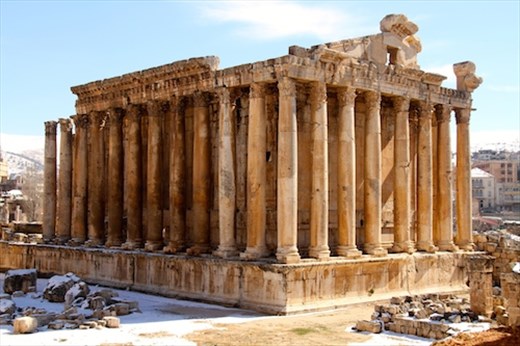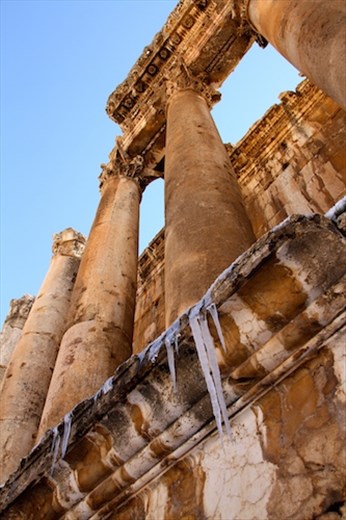THE GREEKS CALLED IT HELIOPOLIS, THE CITY OF THE SUN. Julius Caesar expanded the name to Julia Augusta Felix Heliopolis in honor of his daughter. By any name, the World Heritage Site at Baalbek is reason enough to visit Lebanon. And it was worth our second attempt — one hundred kilometers of icy mountain roads, potholes, speedbumps and bumper-car traffic.

Baachus Temple
Of all the Roman sites we have seen — in Italy, Spain, Romania, England, North Africa and Turkey — Baalbek ranks among the best, right up there with Ephesus. Not a city like many of the others, Baalbek was a temple complex honoring the gods of the Heliopolitan Triad, Jupiter, Venus and Mercury. Despite nearly two millennia of earthquakes and conquering civilizations, the site is wonderfully preserved. Everything was spectacular with the new snow under sapphire blue sky.

Icesicles
We later learned from an American woman from UNHCR (UN High Commission on Refugees) that it is considered a dangerous area, which probably explains why there were only a handful of other visitors. Maybe the Syrian border outpost on the hill above us should have been a hint.

Arches within arches
It took both Connie’s map skills and numerous stops at petrol stations — we recommend Total; sometimes they even wash your windshield while you get directions — we located the Umayyad archaeological site at Aanjar. Unlike other places we have visited where one civilization sits upon the remains of another, Anjar was a one trick pony. The short-lived 8th Century Umayyad caliphate brought Islam from the Indus Valley to southern Spain. And Anjar was an important trading center between Damascus and Sidon.